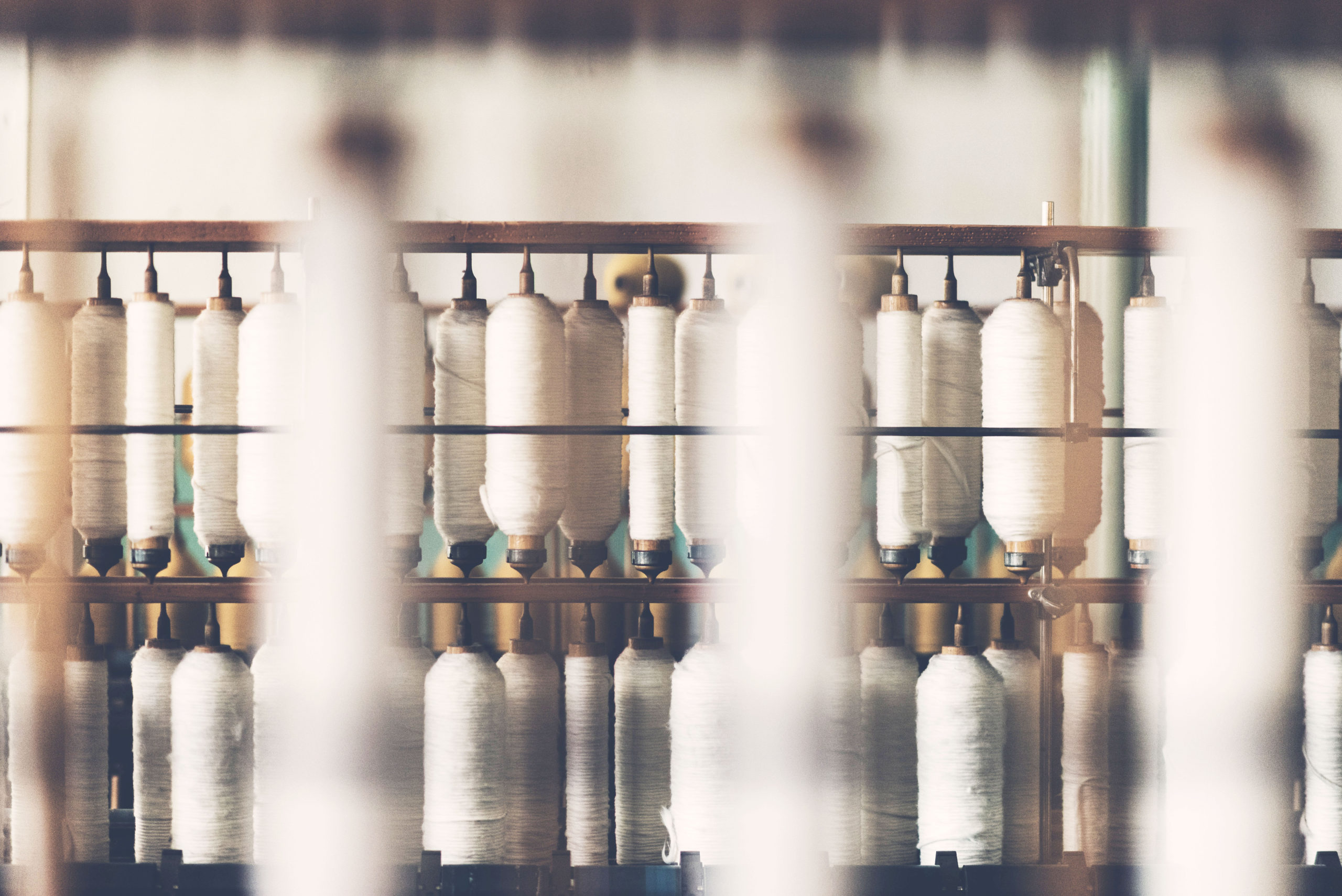When it comes to talking about fashion and environmental impact, there is a statement that is frequently repeated in the media: fashion is the second most polluting industry on the planet. However, this statement is inaccurate since there is no study that confirms the position of fashion in the ranking of the most polluting industries. A fact that, on the other hand, doesn’t prevent us from recognizing the consequences that the textile sector has caused on the planet. Moving towards systemic change requires defining the key impacts to be measured in order to quantify the environmental footprint of fashion brands like yours.
The linear production model based on “take-make-dispose” has caused the depletion of natural resources, contributing to deforestation, uncontrolled carbon emissions, droughts, floods, global warming and a high generation of waste. While governments define action plans and legislative measures to reduce the environmental impact of the industry, it’s worth asking, what has happened to set off the alarms now? Just take a look at the figures that demand a paradigm shift in the way textiles are produced, consumed and discarded.
Water scarcity
The fashion industry consumes excessive amounts of water worldwide. According to a report by the Ellen MacArthur Foundation, it is estimated that the textile sector currently uses around 93 billion cubic meters of water per year, which represents 4% percent of all freshwater extraction worldwide. A consumption that, according to current trends, could double in 2030, as we already pointed out in our article on why the sustainable transformation of fashion is so necessary.
The fashion industry uses around 93 billion cubic meters of water per year, which represents 4% percent of all freshwater extraction worldwide
The fashion industry relies on water throughout the whole production process. For the manufacture of a single cotton shirt, the most common natural fiber, approximately 2.500 liters of water are required according to the Water Footprint Network. A great example of its voracity is the disappearance of the Aral Sea in Central Asia, which has been reduced to 10% of its previous volume largely due to irrigation for cotton crops.
Using fibers from organic farming can make a big difference in the water footprint of fashion. As well as reducing or eliminating water from the dyeing process to eradicate pollutants that end up in local water systems.
To discover the water footprint of your fashion brand’s collections, BCome analyzes the following impact throughout its life cycle:
- Water scarcity: Deprivation of water to humans and ecosystems due to water consumption in the product value chain.
- Methodology used based on EU recommendation: AWARE methodology
- Impact indicator: m³ water eq*
*The consumption of different types of water in different regions of the world translated into a common unit: m³ water eq. The addition of “eq” refers to the conversion of the original unit into m³.
Global warming
In 2017 it was estimated that if the fashion industry was a country, it would be the sixth emitter of greenhouse gases in the world. The fashion industry represents between 2% and 4% of global emissions. An alarming figure that could increase by around 30% by 2030 if the trend continues, reaching an estimated 2.7 billion tons of CO2 according to the Fashion on Climate report.
The fashion industry represents between 2% and 4% of global carbon emissions
Most of the fashion supply chain still relies on coal to generate electricity, one of the fossil fuels that contributes the most to climate change.
But the responsibility of the brands doesn’t end with production. Around 20% of greenhouse gas emissions are produced through the use of garments, washing, the use of the dryer, ironing and dry cleaning. It’s essential for brands to communicate that garments are created to last and provide the necessary care instructions. Fashion brands that want to minimize their energy impact need to consider the full life cycle of the product, taking into account its durability.
Investing in carbon offset schemes, as well as committing to the energy efficiency of supply chains, is essential for brands when it comes to reducing their energy impact.
In order to find the carbon emissions generated throughout the life cycle of your products, BCome quantifies the following impact:
- Global warming: Heat absorbed by any greenhouse gas released in the atmosphere from the product value chain.
- Methodology used based on EU recommendation: IPCC 2013 GWP 100
- Impact indicator: kg CO2 eq*
*The different greenhouse gas (GHG) emissions to the atmosphere are translated into a common unit: kg CO2. The addition of “eq” refers to the original unit in kg CO2.
Eutrophication
In order to transform raw materials into final products, many synthetic chemicals are used in clothing and footwear. These chemicals, in addition to being a health hazard to the people who handle them, also end up polluting freshwater systems.
According to Pesticide Action Network, cotton production uses 4% of all the world’s pesticides and 10% of insecticides. Conventional cotton farming makes heavy use of nitrogen and phosphorus-based fertilizers, as well as pesticides and insecticides to protect crops from insects.
Cotton production uses 4% of all the world’s pesticides and 10% of insecticides
A long list of chemicals are also used during dyeing, processing and finishing. Chlorobenzenes, toxic by inhalation or by contact with the skin, are often used to dye polyester. Phthalates are used to dye and soften leather, rubber, and PVC in the manufacture of footwear and accessories. Perfluorinated chemicals, formaldehydes and chlorinated paraffins are used in finishing processes to achieve waterproofing or fire retardant effects.
It’s essential to guarantee wastewater treatment to prevent these synthetic chemicals from polluting rivers and seas. From prioritizing organic farming to finding alternatives in processing and manufacturing, there are multiple ways to reduce the use of toxic chemicals in the fashion industry.
This is the impact that BCome measures to calculate the level of toxic chemicals associated with your products:
- Eutrophication: Accumulation of phosphates and nitrates released by the use of pesticides, fertilizers, detergents and other chemicals in an ecosystem.
- Methodology used CML-IA baseline 2013
- Impact indicator: g phosphates eq*
*The different types of chemicals in water, soil, and air are translated into a common unit: g phosphates eq. The addition of “eq” refers to the conversion of the original unit into kg phosphates.
Abiotic depletion
Fashion relies heavily on non-renewable resources like petroleum for synthetic fabrics and chemicals. The extraction, processing and transportation of these resources contribute to abiotic depletion and environmental degradation. According to Fossil Fuel Fashion, synthetic fibre production uses the equivalent amount of oil per year as the whole of Spain and polyester production produces as much emissions as 180 coal fired power stations a year.
Coal, known for its high pollution levels, is a major energy source in fashion manufacturing hubs such as China, India and Vietnam. Recently, fashion industry leaders have been discreetly urging their suppliers to eliminate coal from factories.
This effort is in line with their commitments under the UN Fashion Charter for Climate Action, where they pledge to stop partnering with new suppliers that rely on coal for fabric dyeing and treatment by 2030.
Synthetic fibre production uses the equivalent amount of oil per year as the whole of Spain
In order to find the depletion of abiotic resources throughout the life cycle of your products, BCome quantifies the following impact:
- Abiotic depletion: Depletion of nonliving (abiotic) resources including oil, natural gas, and coal used as energy carriers.
- Methodology used based on EU recommendation: CML-IA baseline 2013
- Impact indicator: MJ
The legislation planned for the coming years will be key in accelerating change in the fashion industry. The climate crisis has been a turning point for us to recognize the power of the textile sector as part of the solution to a problem to which it has contributed for years. The excesses that have been committed on the environment can still be balanced through knowledge of the real impact that brands like yours are generating on the planet.
At BCome we help you find the answers you need to improve the performance of your products. We measure the environmental, social and circular impact of your collections throughout their life cycle to enable you to make data-driven decisions. Sustainability is at your fingertips, let’s work together and build a responsible, ethical and safe production model for people and the planet.









